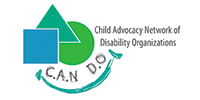What are the Autism Spectrum Disorders?
Each of the disorders on the autism spectrum is a neurological disorder that affects a child’s ability to communicate, understand language, play, and relate to others. With varying degrees from mild to severe, these include communication problems, difficulty relating to people, things, and events, playing with toys and objects in unusual ways, difficulty adjusting to changes in routine or to familiar surroundings, and repetitive body movements or behaviors. These characteristics are typically evident before the age of three.
The five disorders classified under the umbrella category officially known as Pervasive Developmental Disorders, or PDD (now often referred to as “Autism Spectrum Disorders”- or ASDs) are Autism, Asperger syndrome, Rett Syndrome, Childhood Disintegrative Disorder; and Pervasive Developmental Disorder Not Otherwise Specified (PDDNOS). A child’s abilities, intelligence and behavior can differ considerably for each of these disorders. Language skills vary too, with some children not talking at all, while others use repetitive language, and some have advanced language skills and talk about a range of topics.
The causes of autism and the other disorders on the spectrum are not known. Researchers are currently studying such areas as neurological damage and chemical imbalances within the brain.
Autistic Disorder (Autism): Individual shows characteristics of, impairment in social interactions, communication, restrictive and repetitive patterns of behavior.
Asperger Syndrome: Asperger-Syndrome entails delays in the development of many basic skills. Children with Asperger-Syndrome tend to be shy in social situations, have difficulty understanding non-literal language and may develop abnormal, prolonged fixations on certain behaviors, activities or things.
Childhood Disintegrative Disorder: Also known as Heller’s Disease, it is a rare condition in which children develop normally during the first few years until they are afflicted by a sudden regression in social, communication and other basic skills.
Rett Syndrome: Rett Syndrome is a neuro-developmental disorder that affects girls almost exclusively. It is characterized by normal early growth and development followed by a slowing of development, loss of purposeful use of the hands, distinctive hand movements, slowed brain and head growth, problems with walking, seizures, and intellectual disability.
Pervasive Developmental Disorder Not Otherwise Specified (PDDNOS): A PDDNOS diagnosis is made when a child displays some of the symptoms associated with the autism spectrum, most notably difficulties in socializing and communicating, but does not neatly match the exact symptoms of other disorders on the spectrum.
Signs and Diagnosis
A diagnosis of autistic disorder (or “classic” autism) is made when a child displays 6 or more of 12 symptoms across the three major areas of social interaction, communication and behavior. This includes the inability of developing and maintaining relationships with peers, appropriate to the level of the child’s development, the absence of language and difficulties with its development, and repetitive and abnormally intensive preoccupation or focus in some areas of interest.
When children display similar behaviors but do not meet the specific criteria for autistic disorder, they may be diagnosed as having one of the other disorders on the spectrum: Aspergers, Rett’s, Childhood Disintegrative Disorder, or PDDNOS. PDDNOS is the least specific diagnosis and typically means that a child has displayed the least specific of autistic-like symptoms or behaviors and has not met the criteria for any of the other disorders.
Some common symptoms for ASDs include repetitive play and limited social skills and unusual and sometimes uncontrolled reactions to sensory information like loud noises, bright lights, and certain textures of food or fabrics.
Treatment
Early diagnosis and intervention are very important for children with an ASD. The treatment and educational needs of a child with any of these disorders is very similar though there are slight differences and degrees of severity between these five conditions.
In addition to academic instruction that is best presented visually and verbally, children with ASDs benefit from special education programs that focus on improving communication, social, academic, behavioral, and daily living skills. Interaction with nondisabled peers is also important, as children with ASDs learn appropriate language, social, and behavioral skills from them. Consistency and continuity are very important for children with an ASD. Parents should always be involved in the development of their child’s program, and be well informed about the specific disorder of their child. Individually designed educational programs and adult support services in employment and living arrangements, can greatly contribute to help children with a disability on the autism spectrum grow to live, work, and participate fully in their communities.
Children with autism should be educated in the regular classroom, alongside other children. Separate schooling would be necessary only if the nature or severity of the disability is such that education in regular classes with the use of supplementary aids and services cannot be achieved satisfactorily. Providing the opportunity for children with autism to go to a school with their peers from their community has many benefits including paving the way for a smooth transition to adulthood and meaningful inclusion in the community. Their aspirations like that of their peers, could be finding a good place to live, meaningful employment, the company of friends and family, intimacy and having a role in the community.
Whilst some children with autism may not need too much help, others could require a lot of support with developing independent living and self-care skills, the possibility of higher education or vocational training, and how to connect with adult service systems. When given these opportunities and support, they can become worthy and productive members of their families and the community.
Source:
